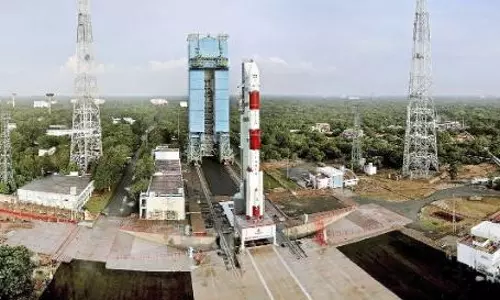
NASA preps for humanity’s first return to Moon in over 50 years
text_fieldsNew Delhi: In December 1972, the US achieved its final crewed moon landing with Apollo 17, the 11th and final mission of NASA's Apollo programme, as Commander Gene Cernan and Lunar Module Pilot Harrison Schmitt explored the lunar surface while Command Module Pilot Ronald Evans orbited above.
Launched on December 7, the mission broke several records for crewed spaceflight, including the longest crewed lunar landing mission (12 days, 14 hours), greatest distance from a spacecraft during an extravehicular activity of any type (7.6 km), longest total duration of lunar-surface extravehicular activities (22 hours, 4 minutes), largest lunar-sample return (approximately 115 kg) and longest time in lunar orbit (6 days, 4 hours).
NASA now aims to make history by sending astronauts to explore a region near the Moon’s South Pole.
In 2022, Artemis I sent an uncrewed Orion to lunar orbit and back late last year. Artemis II is slated to send four astronauts -- three from NASA and one from the Canadian Space Agency (CSA) -- around the moon in late 2024 or 2025.
Following two Artemis test missions, Artemis III will mark humanity’s first return to the lunar surface in more than 50 years.
Earlier this month, the US space agency pushed back its manned Artemis mission to the Moon to no earlier than September 2026 which will send the first woman and first person of colour on the lunar surface.
Over the course of about 30 days, the Artemis III astronauts will travel to lunar orbit, where two crew members will descend to the surface and spend approximately a week near the South Pole of the Moon conducting new science before returning to lunar orbit to join their crew for the journey back to Earth.
The crew of Artemis III will ride to lunar orbit aboard the Orion spacecraft, where Orion will dock with the Starship human landing system in preparation for their journey to the lunar surface. Orion is the only spacecraft capable of returning crews to Earth at lunar reentry velocities.
Two crew members will board the SpaceX Starship Human Landing System in lunar orbit and descend to the surface where they will collect samples, perform science experiments, and observe the lunar environment before returning to orbit aboard the Starship HLS, according to NASA.
The crew members will wear Axiom Space's advanced spacesuit as a one-person spacecraft that will protect them from the extreme environment of space while they are performing moonwalks on the Artemis III mission.
The agency has identified 13 candidate landing regions near the lunar South Pole. Each region contains multiple potential landing sites for Artemis III, which will be the first of the Artemis missions to bring crew to the lunar surface.
Through Artemis, the agency will establish a long-term presence at the Moon for scientific exploration with its commercial and international partners, learn how to live and work away from home and prepare for future human exploration of the Red Planet.
Meanwhile, even as Earth's Moon continues to shrink, it may cause landslides and quakes in the lunar South Pole -- the potential landing site for the Artemis mission, according to a team of scientists.
With agency inputs























